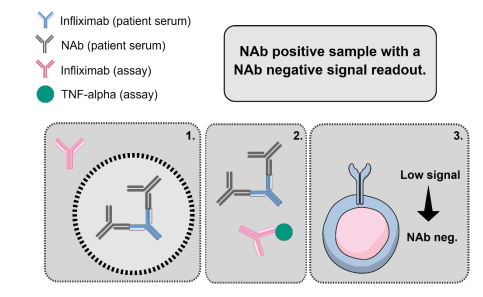Knowing how to write a master’s thesis is a significant undertaking that requires meticulous planning, rigorous research, and effective communication skills. It can be both an exciting and daunting endeavor, but with the right approach and guidance, you can successfully navigate the process. In this article, we will provide a comprehensive guide on how to write a master’s thesis. From how to choose a topic to conduct thorough research, organizing your ideas, and presenting coherent arguments. By following our tips and strategies, you can confidently embark on your master’s thesis journey and produce a high-quality piece of academic work that showcases your expertise and scholarly growth.
What Is A Master Thesis?
A master thesis is a comprehensive research project undertaken by graduate students to demonstrate their mastery of a specific subject area within their field of study. It serves as a culmination of their academic journey and is a requirement for completing a master’s degree.
Purpose Of A Master Thesis
The primary purpose of a master’s thesis is to provide students with an opportunity to engage in in-depth research, critical analysis, and original contribution to their chosen field. It allows students to apply the knowledge and skills they have acquired throughout their academic program, showcasing their ability to conduct independent research, think critically, and present findings in a scholarly manner.
Types Of Master Thesis
There are different types of master theses, depending on the field of study and program requirements. Some common include two types: qualitative and quantitative.
A qualitative or creative thesis involves conducting research that explores topics in a descriptive, exploratory, analytical, or creative manner. This type of thesis is commonly pursued by graduate students in departments that encompass the arts and humanities. It allows students to delve into their subjects of interest through methods such as literature reviews, case studies, interviews, observations, or artistic creations. The focus is on gaining a deeper understanding of the subject matter by examining its nuances, context, and subjective interpretations. Qualitative theses often emphasize the subjective experiences, perspectives, and narratives of individuals or communities. The findings are typically presented through detailed descriptions, narratives, quotes, and artistic representations, providing a rich and contextualized understanding of the research topic.
A quantitative thesis involves the collection and analysis of numerical data obtained through scientific devices or instruments. This type of thesis relies on objective measurements recorded on a scale. The findings of a quantitative master’s thesis are typically presented through quantitative data representations, such as graphs, tables, and statistical measures, allowing for objective interpretations and generalizations. Examples of quantitative master’s theses can include studies on the effects of interventions on outcomes, analyzing relationships between variables, investigating patterns or trends in data, or examining the impact of factors on a particular phenomenon.
It is important to note that the specific types and requirements of a master’s thesis may vary across institutions and academic programs, so students should consult their program guidelines for more detailed information.
Choosing A Topic For The Master Thesis
Choosing a topic for a master’s thesis involves a deliberate process that revolves around finding a research gap and developing relevant research questions. Firstly, it is crucial to explore the existing literature in your field of study to identify areas where knowledge is lacking or conflicting. This helps you pinpoint research gaps that can be addressed in your thesis. Next, consult with advisors and professors who can offer guidance and insights based on their expertise. Brainstorm and formulate focused research questions that contribute to advancing knowledge in your field. Ensure that the chosen topic is feasible in terms of available resources and time constraints, and consider the practical implications and relevance of the topic to assess its potential impact on the field.
Finding A Research Gap
Identifying a research gap is essential when the student is choosing the topic for the master thesis to ensure the thesis contributes to the existing body of knowledge. Students need to conduct a thorough literature review to identify areas where research is lacking or where further investigation is needed. This ensures that the master’s thesis adds value and fills a void in the current understanding of the subject matter.
Developing Research Questions
Formulating clear and focused research questions is crucial for guiding the master thesis. Research questions should be specific, measurable, achievable, and relevant. They should address the research gap identified and guide the entire research process. Students can refine and develop their research questions in consultation with their advisors and by considering the research objectives and scope of their master thesis.
Research Methodology For Master Thesis
The research methodology section of a master thesis outlines the strategies, approaches, and techniques employed to gather and analyze data. It provides a framework for conducting the research study, ensuring its validity and reliability. The research methodology encompasses various components, such as the research design, data collection methods, data analysis techniques, and ethical considerations.
Data Collection Methods
Data collection methods involve the systematic gathering of relevant information to address the research questions. Common data collection methods include surveys, interviews, observations, experiments, archival research, and document analysis. Students should select appropriate methods based on their research objectives, sample size, resources available, and the nature of the research topic. It is important to ensure data collection methods are reliable, valid, and ethical.
Data Analysis Techniques
Data analysis techniques in a master’s thesis refer to the methods and procedures used to analyze and interpret the data collected during the research process. These techniques help researchers make sense of the data, uncover patterns, draw conclusions, and address their research questions or hypotheses. The choice of data analysis techniques will depend on the nature of the research questions, the type of data collected, and the objectives of the study. Researchers need to select the appropriate techniques that align with their research goals and ensure the accuracy and validity of their findings.
Writing The Master Thesis
Writing a master thesis requires careful planning, organization, and effective communication of research findings. It involves synthesizing research data, analyzing results, and presenting arguments coherently and logically. Writing the master thesis is an opportunity to showcase academic writing skills and demonstrate mastery of the subject matter.
Structure Of A Master Thesis
The structure of a master thesis typically includes several key sections. While the specific organization may vary by discipline, empirical dissertations typically follow a common format. Here’s a breakdown of the key sections:
Abstract: A concise summary of the thesis, providing an overview of the research question, methods, findings, and conclusions.
Table of Contents: A list of the main sections and subsections in the thesis, enabling easy navigation.
List of Tables/Figures: A compilation of tables and figures used in the thesis, with corresponding page numbers.
Introduction: An introductory section that sets the context, states the research problem or objective and outlines the scope and significance of the study.
Literature Review: A comprehensive review of existing research and scholarly works related to the thesis topic, demonstrating the gap or need for further investigation.
Methodology: A detailed explanation of the research design, methods, data collection procedures, and any statistical or analytical techniques employed.
Findings: Presentation and analysis of the research findings, often supported by tables, charts, or graphs.
Discussion: Interpretation and evaluation of the findings, comparing them to previous research, addressing limitations, and offering insights and implications.
Conclusion: A concise summary of the research, restating the main findings and their significance, along with suggestions for future research. For more details about the thesis conclusion, read our content “Thesis Conclusion: Making Your Research Paper Outstanding“.
References: A list of all the sources cited in the thesis, following a specific citation style.
Appendices: Additional materials such as raw data, interview transcripts, or questionnaires that provide supplementary information to support the thesis.
Writing Style And Formatting Requirements
When writing a master’s thesis, it is important to adhere to the specific writing style and formatting requirements set by the academic institution or program. This may include guidelines on font type and size, margins, line spacing, citation style (such as APA, MLA, or Harvard), and referencing conventions. Following these requirements ensures consistency and professionalism in the presentation of the thesis. Maintaining a clear, concise, and formal writing style is essential to effectively convey ideas and arguments in a scholarly manner.
Proofreading And Editing The Master Thesis
Proofreading and editing a master thesis is a crucial step to ensure its quality and coherence. Start by scheduling a meeting with your advisor to discuss the revision and editing process. Check for consistency in formatting, citation style, and numbering. Review grammar, punctuation, and spelling manually, while also using automated tools. Improve sentence structure and logical flow, ensuring arguments connect smoothly. Verify citations and references for accuracy and proper formatting. Seek feedback from trusted peers or advisors and incorporate their suggestions. Make necessary revisions and conduct a final proofread, paying attention to details.
Submitting The Master Thesis
Submitting the master thesis is the final step in the process, marking the culmination of extensive research and writing. Before submission, ensure that the thesis adheres to the prescribed guidelines and formatting requirements set by the academic institution or program. Review the document for any errors, inconsistencies, or formatting issues, ensuring that all sections, citations, and references are accurate and properly cited. Include any required supporting materials or appendices as specified. Create a comprehensive checklist to verify that all necessary components, such as the title page, abstract, acknowledgments, and table of contents, are present and correctly formatted. Finally, submit the master thesis by the designated deadline, following the specific submission instructions provided by the institution or program.
Defending The Master Thesis
Defending the thesis is an essential step in the completion of a master’s degree. Here are some tips to help prepare a successful thesis defense:
Preparation: Thoroughly review and understand the thesis, including the research question, methodology, findings, and conclusions. Familiarize with the relevant literature and anticipate potential questions or criticisms.
Structure the presentation: Create a clear and logical structure for the presentation. Include an introduction, background information, research objectives, methodology, results, discussion, and conclusion. Use visual aids such as slides to illustrate key points effectively.
Explain methodology: Describe the research methodology, including data collection techniques, tools, and analysis methods. Justify choices and explain how they align with the research objectives.
Present results: Present the research findings and highlight the key outcomes. Clearly explain any statistical analyses or experiments conducted and discuss the implications of the results.
Discuss limitations: Acknowledge the limitations of the research. Explain any constraints or factors that may have influenced the outcomes or impacted the validity of the results. Demonstrate awareness of these limitations and discuss potential areas for future research.
Be open to feedback: View the defense as an opportunity to receive valuable feedback. Show receptiveness to suggestions for improvement and engage in constructive discussions.
Remember that these steps are general guidelines, and the specific requirements and expectations for defending a master’s thesis may vary among institutions. It is advisable to consult the advisor or program guidelines for additional information and recommendations tailored to this particular situation.
Learn more about how to Approach Thesis Defense Questions: https://mindthegraph.com/blog/thesis-defense-questions/
Common Mistakes To Avoid In Writing A Master Thesis
When writing a master’s thesis, it is important to be aware of common mistakes and take steps to avoid them. Some common mistakes to avoid include:
Lack of clarity in research objectives: Clearly define the research objectives and ensure they are specific, measurable, achievable, and relevant. Unclear objectives can lead to a lack of focus and coherence in the thesis.
Poor organization and structure: Plan thesis structure carefully, ensuring a logical flow of ideas and smooth transitions between sections. Poor organization can make it difficult for readers to follow the arguments and understand the research.
Insufficient literature review: Conduct a comprehensive literature review to provide context and establish the theoretical framework for the research. Failing to adequately review existing research can result in a weak foundation for the thesis and overlook essential contributions to the field.
Inadequate data analysis: Ensure that the data analysis is robust and appropriate for the research questions. Use suitable data analysis techniques and provide clear interpretations of findings.
Inconsistent referencing and citation: Follow the required citation style consistently throughout the thesis. Accurately cite all sources and provide a comprehensive reference list or bibliography. Inconsistent referencing can lead to accusations of plagiarism and undermine the academic integrity of your work.
Lack of proofreading and editing: Thoroughly proofread and edit the thesis to correct grammatical errors, improve sentence structure, and ensure clarity. Neglecting this step can result in a lack of professionalism and diminish the overall quality of your work.
Tips For Writing An Effective Master Thesis
Here are some tips for writing an effective master thesis:
Start early: Begin the thesis writing process as early as possible to allow ample time for research, analysis, and writing. Procrastination can lead to unnecessary stress and compromise the work’s quality.
Develop a clear research question: Define a focused and well-defined research question that aligns with the interests and contributes to the existing body of knowledge in the specific field. A clear research question will guide the research and provide a strong foundation for the thesis.
Plan and outline: Create a detailed outline or a roadmap for the thesis, including the main sections, subtopics, and key arguments. This will help to stay organized and maintain a logical flow throughout the writing.
Conduct thorough research: Invest time in conducting comprehensive research, including literature reviews, data collection, and analysis. Use credible sources and critically evaluate the information to support the arguments effectively.
Maintain academic writing style: Write in a formal, concise, and clear style appropriate for academic writing. Avoid excessive jargon and ensure that ideas are communicated effectively to the target audience.
Structure the thesis effectively: Follow a logical structure with well-defined sections, such as an introduction, literature review, methodology, results, discussion, and conclusion. Each section should contribute to the overall coherence and flow of the thesis.
Seek feedback and revisions: Share the work with the advisor, peers, or mentors to get feedback and constructive criticism. Incorporate their suggestions and revise the thesis accordingly to strengthen the arguments and improve the overall quality.
Stay organized and manage time effectively: Create a realistic timeline, set deadlines, and manage time effectively throughout the writing process. Break down the tasks into smaller manageable parts to avoid feeling overwhelmed and ensure steady progress.
High Impact And Greater Visibility For Your Work
Mind the Graph is a powerful platform that aids scientists in achieving high impact and greater visibility for their work. With its user-friendly interface and extensive library of customizable scientific illustrations, Mind the Graph allows scientists to communicate their findings effectively and attractively. Mind the Graph empowers scientists to present their work with impact and visibility, advancing their research and contributing to their field.

Subscribe to our newsletter
Exclusive high quality content about effective visual
communication in science.





